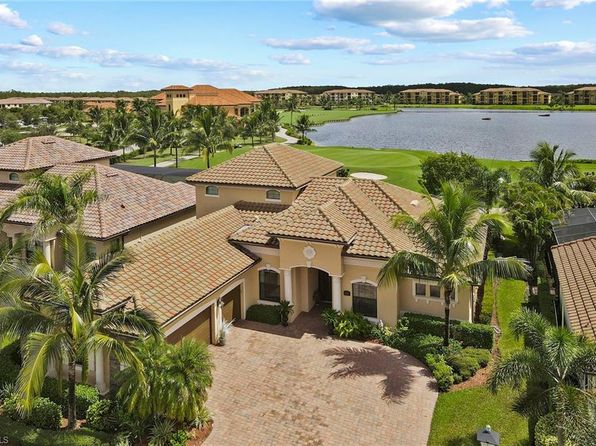Table of Content
You’ll have the opportunity to sell the property for capital gains of course, since that equity is essentially going into your pocket as a nice check at the time of sale. It takes knowledge and labor to find good deals on rental properties, and some work to manage them. But that knowledge and labor creates a barrier to entry, preventing every Tom, Dick, and Harry in the world from competing with you to invest in real estate. The loan-to-value ratio is a lending risk assessment ratio that financial institutions and other lenders examine before approving a mortgage. Full BioJean Folger has 15+ years of experience as a financial writer covering real estate, investing, active trading, the economy, and retirement planning. She is the co-founder of PowerZone Trading, a company that has provided programming, consulting, and strategy development services to active traders and investors since 2004.

That also means you pay back a HELOC incrementally based on the amount you use rather than on the entire amount of the loan, like a credit card. If you made a minimum payment of $300 each month, you would spend 46 months paying it off and fork over $3,629 in interest in the process. Finally, another downside is that youll have to pay closing costs on the home equity loan, which could be between 2% and 5% of the total loan cost. Youll also have to pay closing costs on the home that youre buying. That said, homeowners frequently build home equity via renovation and remodeling.
How to build equity in your home
Founded in 1976, Bankrate has a long track record of helping people make smart financial choices. We’ve maintained this reputation for over four decades by demystifying the financial decision-making process and giving people confidence in which actions to take next. “Expert verified” means that our Financial Review Board thoroughly evaluated the article for accuracy and clarity. The Review Board comprises a panel of financial experts whose objective is to ensure that our content is always objective and balanced. Many or all of the products featured here are from our partners who compensate us.

The answer depends on your lender, how well you're prepared, and how long it takes to schedule an appraiser and a closing attorney. In addition to home improvement projects, you should also be taking care to maintain your home in the best shape possible. There are a lot of factors at play in terms of how your home’s value appreciates, including the economic growth of your neighborhood, supply and demand, and proximity to certain amenities. And while you don’t have much control over those, you can affect your home’s market value in a positive way by keeping your home well maintained and putting in certain improvements. Local housing markets change over time, so your home’s value might fluctuate. When home prices increase in your neighborhood and demand grows, the value of your home rises.
Building Equity by Reducing Debt
Banks are profit-driven, and the amount of money they tell you that you can spend on a house isn’t necessarily what’s smart to spend. Think of your own budget and financial goals, and choose a home that will allow you to pay more and pay faster. Even if you have a 30-year mortgage, you can speed things up by paying extra amounts. There’s no law that says you must pay only the amount dictated by your 30-year mortgage agreement. Each additional dollar you pay above your required monthly payment reduces your debt and adds to your equity—just make sure your lender applies those payments to the principal.

But more than two-thirds of total home buyers pay much less than that. Subtract your mortgage balance from your home’s value to determine your home equity amount. Sometimes you’ll be disciplined, and sometimes you might slip, and that’s okay! Just remember that every dollar you add now builds equity and pays down your mortgage that much faster. For example, if you own a property worth $150,000, and you owe $100,000 on the mortgage, you have $50,000 in equity.
What Can You Use Equity For?
A Zillow analysis found the housing market gained more value in 2020 than in any other year since 2005. The other way in which homeowners build equity is through home price appreciation. If your $150,000 home increases in value to $165,000 after 10 years, for instance, you’ve achieved a $15,000 equity boost.
That number can be different from person to person, though, and depends heavily on your credit score, financial history and current income. Another option, with mortgage rates low, is to refinance into a lower-rate mortgage loan. Then, at the new, lower rate, continue to make your same mortgage payment as before. Understanding home equity and how to build it can be incredibly valuable to your financial future. In layman’s terms, home equity is the difference between your home’s value and what is left on your mortgage. When you may payments on your mortgage, what you owe decreases and the value increases!
What Is The Current Auto Loan Interest Rate
People don’t often consider this option because they think that converting a 30-year mortgage to a 15-year one will double their mortgage payment. Your mortgage payment will increase significantly, but it won’t double in amount. If you are paying $1,073 monthly towards the principal and interest of your 30-year mortgage, you will pay $1,581 for a 15-year mortgage. Let’s say that your $250,000 house increases in value, and is worth $300,000 in just two years after you bought it.

Home equity is wealth and, for many U.S. households, equity in a home represents the largest percentage of their total net worth. This is a structured loan with a repayment plan that takes a certain amount of the home equity and gives it to you now. This product is a good fit if you have a specific goal for what to do with the money, like paying for a large home improvement.
However, there are a few ways you can reduce or eliminate PMI as your equity grows. Install a wooden deck to extend your living space into the outdoors and get the maximum equity-bang for your buck. A wooden deck is an efficient equity-building home addition because it is an inexpensive way of increasing the square footage of your home and improve its curb appeal.

But this compensation does not influence the information we publish, or the reviews that you see on this site. We do not include the universe of companies or financial offers that may be available to you. We are an independent, advertising-supported comparison service. We believe everyone should be able to make financial decisions with confidence. If you’re fortunate, home values in your market could increase over time without any action on your part. That’s most likely to happen in attractive neighborhoods or growing towns.
If you refinance your mortgage from a 30-year plan to 20 or 15 years, your home equity will start to build much faster. According to Bank of America, you can calculate your equity based on current appraised value less any mortgages tied to your home. If your home is appraised at $400,000 and you owe $120,000, then your equity is $280,000. But that doesn’t mean you have savings of $280K; it just means that you have a general idea of how much your home will yield should you sell it at that moment, less closing costs, of course. A healthy mix of both of these will diversify your game plan, and help you create real equity faster, in a sustainable way. Making smart, simple upgrades to both the inside and outside of the property, or adding a rental suite, will boost rental income and resale value.






























